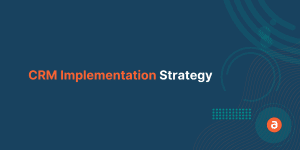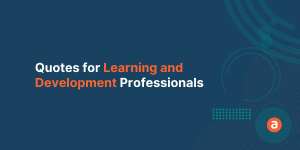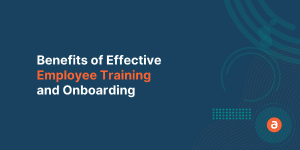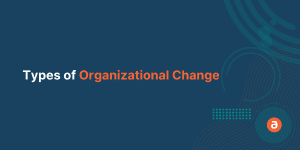Organizations today have gone through an average of five major firmwide changes in the past three years – and nearly 75% expect to multiply the types of major change initiatives they will undertake in the next three years.
With these many changes being brought in, organizations have to be prepared to manage them effectively and carry out the organizational transformation, without running into roadblocks.
What Is Organizational Transformation?
Organizational transformation is a strategic method of transforming the existing culture of an organization by making changes to the existing business operations, work design, or the direction of the company. Organizational transformation usually, if not always, involves all of the employees of the organization.
Phases of Organizational Transformation Process
It is common that initiatives of organizational transformation aren’t accepted immediately by the employees. To make it seamless and hassle-free, it is recommended that the organizational change implementation process is broken down into the following 4 phases:
1. Resistance
Whenever a change is implemented at an organization, there will be some sort of resistance from the people who will be impacted by the change the most. This could be a fear of the unknown or a misunderstanding of the details of the change.
2. Adjustment
In this phase, the employees are properly educated about the details of the change. Their feedback is taken into account and adjustments are made to the change in order to create a win-win situation for both the employees and the organization.
3. Acceptance
After the employee feedback loop is closed effectively, they begin to accept it, breaking the barrier of resistance. This is a good sign for the company as, eventually, the organization will transform to accept the vision of the change initiative.
4. Consistency
Once the change is accepted, it has to sustain in the organization. The fourth and final phase of the organizational transformation process is consistency, where everyone involved with the change initiative accepts the change and makes it a part of their daily routine.
Employee resistance is just one of the challenges that organizations will face while implementing change. There are numerous roadblocks that can hinder your initiative. This is why change initiatives are considered high-risk initiatives. However, it’s not all gloom and doom. Being prepared is the first step.
To be prepared to handle change, organizations must know what challenges they can expect while implementing change.
This blog discusses 5 common challenges that organizations face while carrying out change initiatives.
5 Challenges that should be addressed before undergoing change:
- Employee Resistance
- Ineffective Training
- Communication
- Gaining Executive Buy-In
- Low Change Adoption
1. Employee Resistance
As we talked about earlier, employee resistance is the most common barrier to successful organizational transformation. Resistance often happens due to misunderstandings, miscommunication, or distrust among employees.
Employees may resist because they do not want to learn something new. They may fear the unknown and doubt their ability to adapt to change. It is normal for people to be uncertain when dealing with the unfamiliar.

Resistance can be active or passive. Employees that are actively resisting voice out their opinions about the change whereas passive resistors verbally agree to the change but do not follow through.
Most employees, sometimes including management, may lack the experience or motivation to notice the necessity of the change. Resistance, in most cases, can be a good sign since resistance indicates that employees do discuss the change and its potential consequences.
There is an engagement value and a higher level of commitment among employees, rather than blind acceptance. The barrier caused by resistance can be overcome by promoting a solid feedback culture and encouraging open communication.
2. Ineffective Training
Change initiatives will always have to take effective training into account. Employees have to be trained to perform new tasks and operations. Effective training speeds up the adoption of the change.
Employees cannot be expected to fully adopt technology without any assistance and support from the organization. Poor training leaves employees confused about the specifics of the change and drastically reduces the success rate of your change project.
Relying solely on classroom-style training can be detrimental to the long-term success of your change programs, and does little to no good for your change initiative. It removes the employees from their work environment and separates them from the tools that they use for their work. It also takes up their time that could otherwise be spent being productive.

Often, with traditional training methods, all employees are provided with the same information which can be heavily redundant for most of them. This could, in turn, result in them feeling overwhelmed with information as the training can be irrelevant to the work that they do.
A digital adoption platform is a modern replacement for traditional training methods. It guides employees through complex software and processes and ensures that they get all the assistance that they need 24/7 with the help of its in-app help deck.
This greatly improves the quality of training and support that the employees get and greatly increases adoption.
3. Communication
Without proper communication between everyone involved in the change process, the execution of the change initiative is destined to fail. A successful enterprise can have the best management framework but its change initiative will fail if communication takes a back seat due to the silos and bureaucracy involved.
Large enterprises take up several change projects, sometimes simultaneously, and communicating all these changes to everyone involved becomes challenging. Managers, at each level, need to be provided with the right avenues to help them communicate the objectives of the change and motivate their teams.
It is therefore wise to invest in intelligent tools like Digital Adoption Platforms that go beyond the traditional medium of communication and help employees learn about changes to any application within the app itself. Doing these small things consistently will ensure that the communicated message is not diluted or misinterpreted while traveling from top to bottom.
4. Gaining Executive Buy-In
The involvement of stakeholders increases drastically as the change initiatives progress. A lack of supportive and active executive sponsorship can inhibit and delay the progress of your change efforts.
A lack of executive buy-in can greatly impact the employees’ opinion on the importance of the change. This leads to a rise in resistance among employees. A lack of executive buy-in also results in a low allocation of budget and resources for the change project. Without a practical budget and solid resources, success is limited.

When the details and importance of the change initiative are communicated well and the senior executives understand and accept it, buy-in across the organization increases.
This enables the project to be properly resourced and deployed, decreases employee resistance, and also increases the chance of the project delivering its intended outcomes.
5. Low Change Adoption
When you break down the adoption of change initiatives by employees, it comes down to the adoption of new technologies, processes, or frameworks. At the end of the day, employees are the deciding factor in the success of your change initiative and when they don’t accept the change and adopt it, you have failed.
To see the real change in business outcomes that the proposed change will bring in, employees have to adopt the changes properly. You will not be able to show the value of the change to stakeholders if your employees don’t adopt it.
To avoid it, organizations can use digital adoption platforms (DAPs) to provide on-screen guidance for new applications or processes. A DAP also lets you keep an eye on the progress of your change initiative and how well your employees have adopted the change.
With a DAP like Apty, employees are able to master new technology in just a few days.
Apty doesn’t require a team of experts to be deployed and provides great value to your business. Increase your ROI from all your software investments and change initiatives with Apty.













